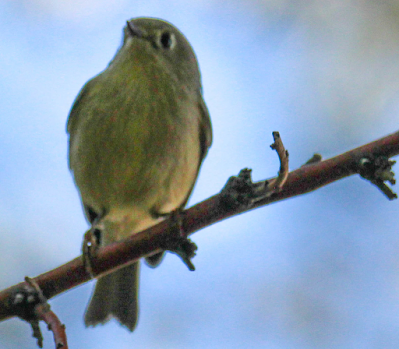The bushtit is a bird I've probably been vaguely aware of, but never really gotten a good look at. It is one of those birds I see on a walk flitting around ahead and never getting two close to. I've only photographed the bushtit on two occasions, and none of the photos are very good. I'm now making a greater effort to look for and photograph the smaller birds and hope to add some better bushtit photos in the future.
The bushtit is found in the western U.S., a little bit up into Canada quite a ways down into Mexico and a little bit of Guatemala.
 |
| Bushtit range from Wikipedia. |
There are 10 subspecies. It is gray-brown overall, has a large head, a short neck, a long tail and a short stubby bill. Males have dark brown to black eyes and females have yellow eyes. Coastal forms have a dark cap and interior forms a brown mask.
 |
| This bushtit was photographed in Live Oak Canyon near Redlands. |
 |
| This bushtit was found in the Irvine Ranch Water District in Orange County. |























































